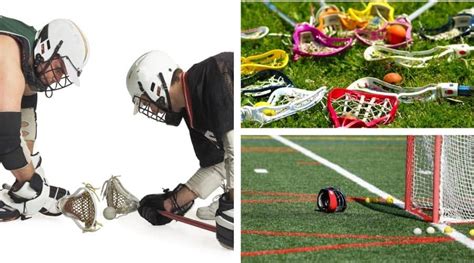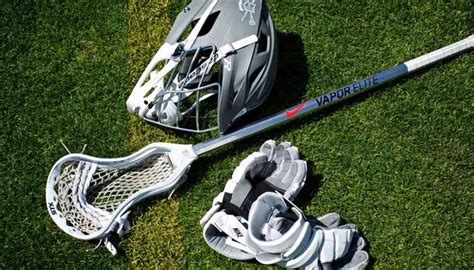Explore essential techniques, equipment, skills, and mental toughness to enhance your lacrosse goalkeeping performance while avoiding common mistakes.### Fundamentals Of Lacrosse Goalkeeping
Lacrosse goalkeeping is a dynamic and challenging position that requires sharp reflexes, strategic thinking, and unwavering dedication. Whether you are a novice stepping onto the field for the first time or a seasoned player looking to refine your skills, understanding the fundamentals of lacrosse goalkeeping is crucial for excellence. In this article, we will delve into essential techniques, the vital equipment needed for success, and strategies for developing key skills that set top goalies apart. Additionally, we will address common mistakes that can hinder performance and highlight the importance of mental toughness in goalkeeping. By the end of this guide, you’ll be equipped with valuable insights to elevate your game and make a significant impact on the field. Join us as we explore the core elements that define successful lacrosse goalkeeping.
Understanding The Fundamentals Of Lacrosse Goalkeeping Techniques
Mastering the fundamentals of lacrosse goalkeeping is essential for any aspiring goalkeeper. Those fundamentals form the backbone of all effective play in this critical position. A solid understanding of these techniques can significantly enhance performance and elevate a goalkeeper’s game on the field.
Here are some key aspects of the fundamentals of lacrosse goalkeeping techniques:
By focusing on these fundamental techniques, aspiring lacrosse goalkeepers can build a strong foundation for their skills. Mastering these fundamentals enables players to become more confident and effective in their role, ultimately contributing to the overall success of their team.
Essential Equipment For Successful Lacrosse Goalkeeping
To excel in lacrosse goalkeeping, having the right equipment is paramount. The right gear not only enhances performance but also ensures the safety of the goalkeeper during play. Here are the essential items that every lacrosse goalkeeper should have:
- Goalie Helmet: A properly fitted helmet is crucial for protecting the head. Look for a helmet that meets safety standards and provides a comfortable fit.
- Chest Protector: This piece of equipment protects the upper body from high-velocity shots. Choose lightweight materials that allow for mobility while providing ample padding.
- Arm Pads: Properly fitted arm pads safeguard the arms and allow for full range of motion while making saves.
- Gloves: Goalkeeper gloves should provide grip and comfort. Ensure they fit snugly, allowing for dexterity while protecting the hands.
- Throat Guard: This less common but vital piece helps protect the throat area from stray balls. It’s a necessary addition for serious goalkeepers.
- Cleats: Good footwear provides traction on the field. Look for cleats designed specifically for lacrosse to ensure stability during rapid movements.
- Stick: The goalkeeper’s stick is longer and wider than regular players’ sticks. Ensure you have a stick that’s comfortable to handle and offers a good feel for the ball.
- Padded Shorts: Consider wearing padded shorts for added protection against ground balls and collisions.
Investing in high-quality gear can significantly improve your game. Familiarity with the fundamentals of equipment use will also enhance your overall performance on the field.
Developing Key Skills For Effective Lacrosse Goalkeeping
To excel in lacrosse goalkeeping, honing specific skills is essential. Here are the key skills that every lacrosse goalkeeper should develop:
1. Positioning and Angling
Understanding where to position yourself in relation to the ball and shooters is crucial. Effective goalkeeping is largely about anticipating shots and having the ability to angle your body to make saves.
2. Hand-Eye Coordination
Your success as a goalkeeper heavily depends on your hand-eye coordination. Regular drills that require you to track the ball’s movement and react quickly can significantly enhance this skill.
3. Reaction Time
Quick reflexes can be the difference between a save and a goal. Practicing drills that emphasize reaction time will help you respond faster to incoming shots.
4. Communication
As the last line of defense, goalkeepers must communicate effectively with their defense. Develop clear verbal cues and signals to help coordinate defensive strategies during games.
5. Decision Making
A good goalkeeper must make quick decisions on whether to come out to challenge a shooter or stay on their line. Develop your decision-making skills through situational drills and game simulations.
6. Strength and Agility
Goalkeeping requires a combination of strength and agility. Incorporate strength training and agility drills into your routine to improve your overall performance in the goal.
7. Shot Stopping Techniques
Mastering various shot-stopping techniques, such as the bounce save, stick save, and body save, is fundamental. Regular practice of these techniques will prepare you to handle a variety of shots during games.
8. Ground Balls
Goalkeepers need to be proficient in collecting ground balls. This skill helps to maintain possession and prevents the opposing team from getting second chances at scoring.
9. Focus and Concentration
Developing the ability to concentrate for extended periods is crucial. Practice mindfulness techniques and stay mentally engaged throughout the game to enhance your focus.
By focusing on these fundamentals of key skills, you can become a more effective and reliable lacrosse goalkeeper. Regular practice, combined with a desire for improvement, will facilitate and solidify your development in goalkeeping.
Common Mistakes In Lacrosse Goalkeeping And How To Avoid Them
Lacrosse goalkeeping is a challenging position that requires both physical and mental skills. Despite the skill set needed, many goalkeepers often fall into common traps that can hinder their performance. Understanding these mistakes and learning how to avoid them is crucial for every aspiring lacrosse goalkeeper. Here are some common mistakes and tips to overcome them:
- Failing to Track the Ball: One of the fundamental aspects of goalkeeping is maintaining a constant view of the ball. Many goalkeepers lose focus and fail to track the ball when it comes at high speed. To avoid this, practice drills that emphasize eye coordination and tracking to improve visual acuity.
- Improper Stance: A poor stance can limit your ability to react quickly. Common mistakes include leaning too far forward or backward. Instead, position yourself with your knees slightly bent, feet shoulder-width apart, and weight distributed evenly. This stance allows for better balance and quicker lateral movement.
- Not Communicating With Defense: Failing to communicate with your defenders can lead to breakdowns in defensive strategy. Ensure that you develop strong communication skills, using clear and confident calls for your team to follow.
- Overcommitting to Shots: Sometimes, goalkeepers commit too early to shots, making it easier for shooters to place the ball in open areas. Work on your footwork and develop patience to minimize overcommitting.
- Neglecting to Practice Stick Skills: A common oversight is not practicing essential catching and clearing techniques. Regularly focus on your stick skills through drills that bolster your ability to catch the ball cleanly and make accurate clears.
By understanding these common mistakes and taking proactive steps to correct them, goalkeepers can enhance their performance and mastery of the fundamentals of lacrosse goalkeeping. Continuous practice, self-awareness, and a commitment to improvement are keys to success in this vital position.
The Impact Of Mental Toughness On Lacrosse Goalkeeping Performance
Mental toughness is a crucial aspect of achieving success in sports, and lacrosse goalkeeping is no exception. The role of a goalkeeper is not only physically demanding but also requires a strong mental fortitude. Goalkeepers often face high-pressure situations that can significantly influence the outcome of a game, making fundamentals of mental resilience essential for any aspiring goalie.
One of the key components of mental toughness is the ability to stay focused amid chaos. Goalkeepers must process rapid information, anticipate plays, and make split-second decisions. Developing a clear mental routine can help maintain concentration, enabling goalkeepers to perform at their best during critical moments. Visualization techniques, where goalkeepers picture themselves making successful saves, can enhance confidence and reduce anxiety.
Furthermore, emotional control plays a vital role in maintaining performance levels. A goalkeeper who becomes frustrated after conceding a goal may struggle to regain composure, which can lead to additional mistakes. Building emotional resilience helps mitigate the impact of setbacks and encourages a swift recovery. Coaches can aid in this development by creating a supportive environment where goalkeepers can practice handling pressure without fear of judgement.
The impact of teamwork cannot be understated. Goalkeepers who cultivate strong relationships with their defensive players foster better communication on the field. This cooperation can relieve some pressure from the goalkeeper, allowing them to focus on their responsibilities. A sense of belonging and support within the team enhances mental toughness, enabling goalkeepers to thrive under pressure and apply the fundamentals of effective goalkeeping.
Mental toughness is an integral part of lacrosse goalkeeping performance. By focusing on concentration, emotional control, and teamwork, goalkeepers can elevate their game and successfully navigate the inevitable challenges of the sport.
Frequently Asked Questions
What are the primary responsibilities of a lacrosse goalkeeper?
The primary responsibilities of a lacrosse goalkeeper include stopping shots on goal, communicating with defenders, and directing the defense.
What essential skills should a lacrosse goalie develop?
Essential skills for a lacrosse goalie include stick handling, reaction time, footwork, and the ability to read the game.
How can a lacrosse goalkeeper improve their reaction time?
A lacrosse goalkeeper can improve reaction time through drills that focus on hand-eye coordination and quick reflex exercises.
What equipment is essential for a lacrosse goalie?
Essential equipment for a lacrosse goalie includes a goalie stick, helmet with faceguard, throat guard, chest protector, gloves, and padded shorts.
How important is communication for a lacrosse goalkeeper?
Communication is crucial for a lacrosse goalkeeper; they need to guide defenders and organize the defense to avoid breakdowns.
What mental strategies can help a goalie perform better during games?
Mental strategies such as visualization, maintaining focus, and developing confidence are key for a goalie to perform well under pressure.
What are some common mistakes made by beginner lacrosse goalkeepers?
Common mistakes by beginner goalkeepers include poor positioning, hesitance to come out of the crease, and failing to track the ball effectively.









